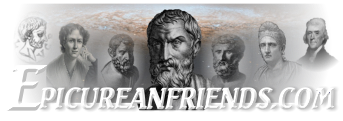Edward Gibbon's The History of the Decline and Fall of the Roman Empire is a monumental work, and his discussion of Christianity's role in the fall of the Roman Empire is notable and controversial. Gibbon's analysis, particularly in Chapters 15 and 16 (end of Volume 1 and beginning of Volume 2), is most often cited for attributing a significant role to Christianity in the decline of the Roman Empire. Below is a breakdown of the relevant sections:
Key Chapters
- Chapter 15: The Progress of the Christian Religion, and the Sentiments, Manners, Numbers, and Condition of the Primitive Christians
- In this chapter, Gibbon examines the rise and spread of Christianity within the Roman Empire. He discusses the zeal, organization, and growth of early Christian communities, suggesting that their spread contributed to a shift in societal values.
- Gibbon argues that Christianity's emphasis on spiritual concerns, pacifism, and otherworldly focus undermined the martial spirit and civic virtues that had sustained Roman strength. He also highlights the intolerance of Christians toward pagan practices, which disrupted the religious pluralism of the empire.
- Key Point: Gibbon suggests that Christianity's rise weakened traditional Roman institutions by diverting loyalty from the state to the Church.
- In Chapter 15, Gibbon lists five causes for the rapid spread of Christianity:
- The inflexible zeal of Christians.
- The doctrine of a future life, which appealed to the masses.
- Alleged miracles that bolstered Christian credibility.
- The moral purity and discipline of Christian communities.
- The organized ecclesiastical structure of the Church. These factors, while explaining Christianity's success, are framed as diverting the empire's focus from secular to religious priorities.
- Chapter 16: The Conduct of the Roman Government Towards the Christians, from the Reign of Nero to that of Constantine
- This chapter focuses on the persecution of Christians and their eventual triumph under Constantine. Gibbon explores how Christianity's growth, despite persecution, led to its institutionalization as the state religion.
- He argues that the adoption of Christianity by the Roman state under Constantine and later emperors shifted resources and attention to religious disputes, weakening the empire's ability to address external threats and internal instability.
- Gibbon also critiques the dogmatic disputes within Christianity, suggesting that theological conflicts (e.g., Arianism vs. orthodoxy) consumed energy that could have been directed toward governance or defense.
Other Relevant Sections
- Chapter 20 (on Constantine's conversion) and parts of Volume 2 touch on the consequences of Christianity becoming the state religion, including the redirection of imperial resources to church-building and religious councils.
- Gibbon's discussion in later chapters, such as those covering the reigns of Theodosius (e.g., Chapter 27), further elaborates on how the establishment of Christianity as the sole religion suppressed pagan traditions and contributed to cultural and political shifts.
Why These Chapters Are Famous
- Chapters 15 and 16 are particularly famous because they were highly controversial when published (1776–1788). Gibbon's Enlightenment-era skepticism and critical tone toward Christianity provoked strong reactions from religious readers, who saw his work as an attack on the faith.
- His arguments in these chapters are often cited in debates about the role of religion in societal decline, making them some of the most discussed and critiqued sections of the work.
History of the Decline and Fall of the Roman Empire — Volume 1
www.gutenberg.org

